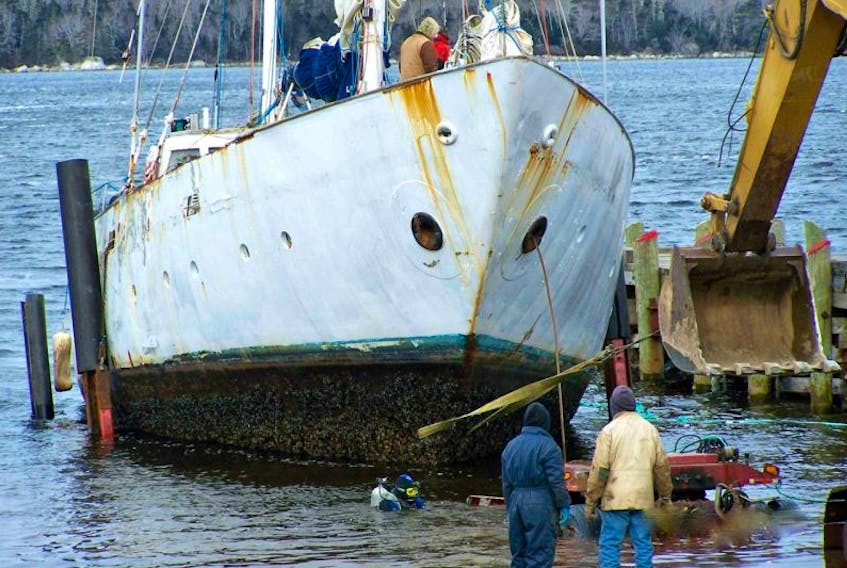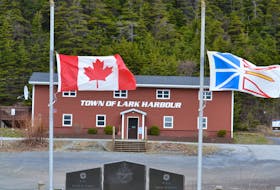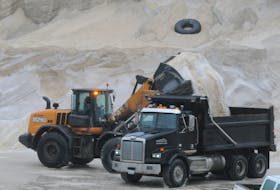According to Transport Canada, a survey in 2012, paired with followup in 2014, identified 147 boats in this province that were potentially derelict, abandoned and/or wrecked. The majority of the vessels here, The Telegram was told, are old fishing vessels, although that covers a broad range.
“As part of Canada’s Ocean Protection Plan, the Government of Canada will provide a comprehensive, national strategy to address abandoned, derelict and wrecked vessels in Canadian waters,” stated a recent emailed response to questions from Transport Canada communications. “We will be creating an inventory of problem vessels to better understand the scope and scale of the issue and the risks associated with it.”
The risks associated include: the potential for wrecks to become a navigational hazard for other boaters; they can become a safety hazard to the public along beaches and public wharves; and there are environmental considerations, including oil and other fluids in engines or oil tanks. The cleanup can be costly and the owners can often be lost to history or simply in the wind.
“It’s hard to find a boat that doesn’t pose some kind of an oil spill risk. Even most sailboats have got some kind of oil in their bilge, or an old engine aboard,” Sheila Malcolmson, NDP MP for Nanaimo-Ladysmith, said in an interview last week.
RELATED LINKS:
Yarmouth-owned boat last of derelict boats to be removed in Shelburne (2014)
Washington State derelict vessels program
On the Manolis L — Canadian Department of Fisheries and Oceans
Malcolmson said she entered federal politics to, at least in part, address the derelict and abandoned vessels in her part of the British Columbia coast. She said the federal government should do more to deal with the vessels.
A motion in October 2016 from Liberal MP Bernadette Jordan, representing South Shore-St. Margarets in Nova Scotia, generally called for action on abandoned and derelict vessels within six months. It received unanimous support. And in Budget 2017, the Liberals included $1.5 billion to support the Oceans Protection Plan, including work on abandoned and derelict vessels.
But half a year on from Jordan’s motion, despite the budgeted cash, Malcolmson said she believes the actual action called for has yet to really come, leading to her own private member’s bill, Bill C-352, introduced in mid-April. It calls for the implementation of a strategy addressing abandoned and derelict vessels, as well as related amendments to be made to the Canada Shipping Act, pushing for vessel removals. A related private member’s bill was tabled a year ago seeking support to designate the Canadian Coast Guard as a “one-stop shop” in relation to removals.
“We’re just really keeping up the positive pressure to get real solutions,” she told The Telegram.
Transport Canada is responsible for safe navigation in Canadian waterways; there may be military or heritage considerations in dealing with wrecks; the Department of Fisheries and Oceans would step in when there is a risk to the environment under the Fisheries Act; the coast guard has responsibilities as well.
Individuals coming across an abandoned boat or wreck can find a Government of Canada flow chart online, “I Found An Abandoned Boat or Wreck,” providing a series of yes or no questions directing them to the best number to call. Immediate concerns, due to fire or suspicious activity, are directed to 911.
Malcolmson said she is interested in further simplifying it all as a first step. After that, she suggested possibly attaching a fee to the vessel registration system to help cover the cost of wreck removals.
She said there may be opportunities to develop some more related recycling, offer an amnesty for small pleasure craft where the owners are unable to pay for removal and perhaps introduce a “cash for clunkers” program to get old boats and barges out of the water, like getting old cars off the road.
She highlighted the existing Derelict Vessel Removal Program under the Washington State Department of Natural Resources. Started in 2002, it is credited with supporting the removal of nearly 600 vessels from state waterways. In 2013 and 2014, according to the state website, the legislature also introduced changes requiring anyone selling a boat of 65 feet or 40 years of age to have the vessel surveyed first, providing the results to the Department of Natural Resources as well as the boat buyer. The buyers must show proof of insurance. The entire idea is to avoid owners walking away from their responsibilities and dumping the costs of dealing with derelict boats on current and future governments.
There are millions of pleasure craft in Canada. In 2002, Transport Canada found that the majority of vessels flagged in this province as potentially derelict, abandoned and/or wrecked were more than 20 years old.
What’s next for the Manolis L?
In February 2015, then-NDP MP for St. John’s South-Mount Pearl Ryan Cleary spoke about derelict and abandoned vessels in the House of Commons. He highlighted a couple of notorious vessels in this province, one being the Manolis L.
The unusual and costly case of the sunken paper carrier remains open. It sank in 1985 near Change Islands, believed to be carrying 462 cubic metres (462,000 litres) of oil and another 60 cubic metres (60,000 litres) of diesel.
A technical assessment by Resolve Salvage & Fire (Americas) Inc., in September 2016 found 115 to 150 cubic metres of oil remained in the wreck.
“Last year, the Canadian Coast Guard replaced a cofferdam, a devise that catches leaking oil, in order to stop a leak of fuel. But that’s not a permanent solution, Mr. Speaker,” Cleary said in the House of Commons, calling for the removal of all oil from the vessel.
More recently, Twillingate Mayor Gordon Noseworthy said he would also like to see the oil removed. However, he said, there is the cofferdam to prevent oil leaking from the vessel and the coast guard has maintained a presence in the area, as promised, and has been monitoring the wreck.
There has just been no word of anything to come.
“It’s going to be a lot of millions to pump (the oil) out,” Noseworthy said. “So what they’re going to do with it, I don’t know.”
The coast guard and Department of Fisheries and Oceans don’t know yet, either.
In response to questions, DFO communications staff could say only, “considerable logistical planning is required before a definitive timeline, cost and course of action can be determined.”









